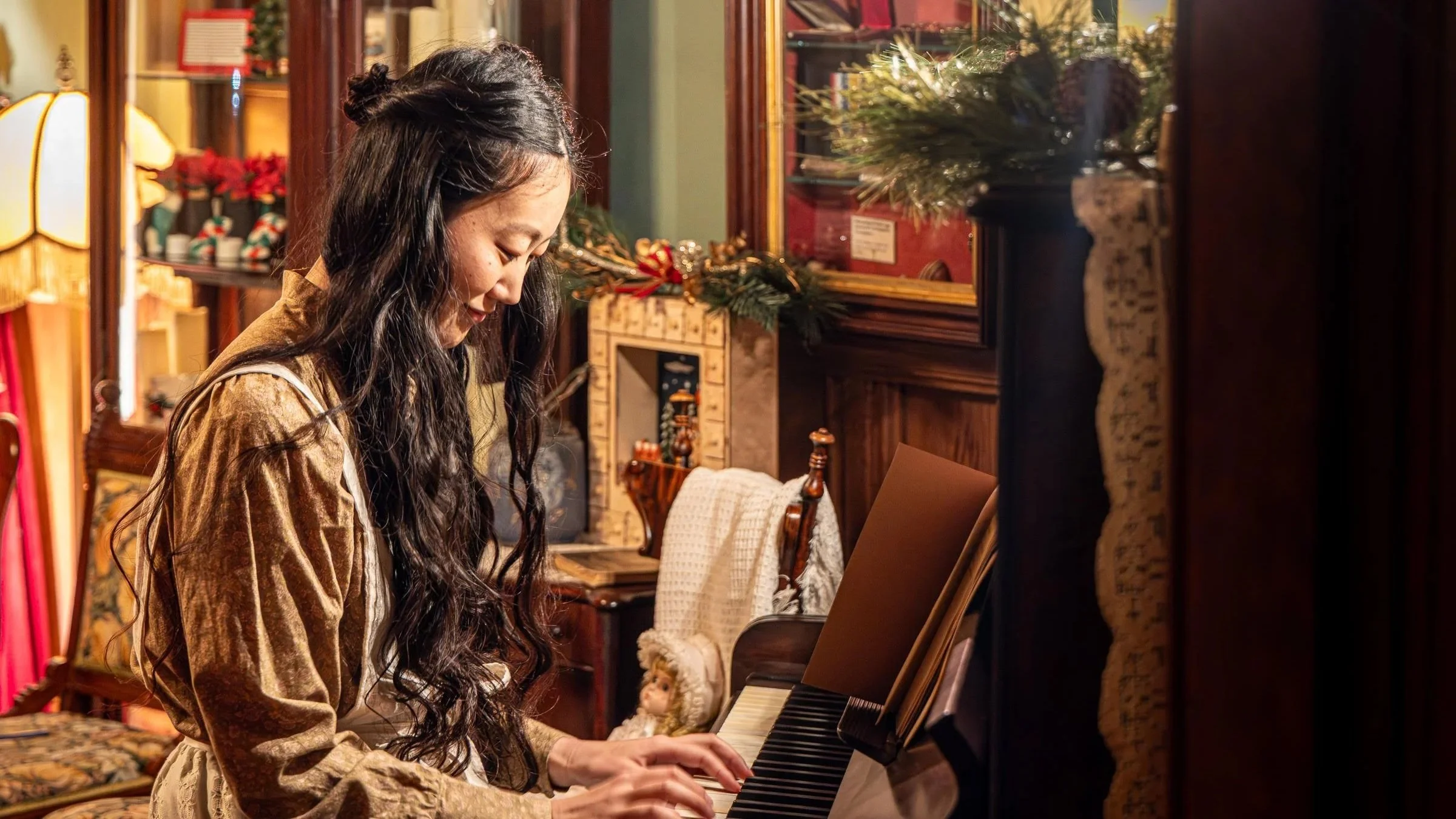After a hiatus, Electric Company Theatre's Kim Collier helps conjure The Magic Hour, a solo walk-through experience
Show inspired by pandemic isolation uses light and stagecraft to animate 12 rooms at Presentation House Theatre
The Magic Hour mixes stagecraft, high-tech lighting, narration, projections, and sound.
Theatre artist Kim Collier.
Electric Company Theatre, Innovation Lighting, and Presentation House Theatre present The Magic Hour from August 3 to 22. Time slots are 3.5 minutes apart, 3:30 to 8:30 pm Tuesday to Friday, and noon to 9:30 pm Saturday and Sunday.
THE LAST SHOW that Siminovitch Prize-winning director Kim Collier helmed was the large-scale, film-stage hybrid The Full Light of Day. Staged for the Electric Company Theatre at the Vancouver Playhouse, it featured a dream team of local actors performing amid 14 live-streaming cameras, dazzling prerecorded projections spreading across an ever-shifting set.
Premiering just over a year-and-a-half ago, it was the kind of show that, in these socially distanced times, seems right out of another era.
And so it is fascinating now to find Collier, well-known for ambitious spectacles right back to game-changing Electric works like Tear the Curtain! and Studies in Motion, staging a production for an audience of one.
She couldn’t be more happy. “I got so excited when I tried to cast my mind to thinking of a form that could be a live experience for people—even if we were in lockdown—and I felt like it was something I had a calling to do,” she tells Stir in a phone interview.
Created with site-specific-theatre innovator Kendra Fanconi, The Magic Hour invites viewers to walk one by one through 12 rooms at Presentation House. Each space is animated by a mix of music, sound, projections, and stagecraft. A narrator (Maiko Yamamoto) leads you carefully through the environment, which takes over the entire building.
The show both reflects our year of isolation at home, in our domestic spaces, and looks forward with hope to the new, changed world we’re stepping out into.
Collier says the seed for the project was being approached by Innovation Lighting, which, because of the pandemic, offered up its high-end lighting technologies because they weren’t being used in the usual conference, wedding, and concert settings.
Collier has experimented with light and projection design before. The biggest change for her here is that the production shifts the point of view to an audience member who moves through the space.
“The challenge was that there would be no touching, no actors, and no crew, and you would, as an audience member, be able to come into a very dynamic and live theatrical immersive exhibit-like experience,” she says. “But what was the key to telling the story, where you’re not passive as an audience member? Going through that creative process with Kendra, we slowly came to the idea that the audience has to become the protagonist in their own story.”
While the piece was conceived for lockdown, Collier seems as inspired by this new mode of storytelling as she has been by anything she’s done for a larger audience. “It’s literally walking into a theatre and having it animated around you. It’s so special. We so rarely get those opportunities,” she says. “When you experience the world of art without somebody beside you, it can be truly profound.”
Scenes from The Magic Hour, where the domestic meets the cosmic.
Alone time
The idea of finding discoveries and epiphanies on one’s own echoes a lot of Collier’s experience of pandemic times.
Before COVID even hit, she had retreated into a reflective artistic phase of solitude—something she’s done occasionally throughout her career. Spending much of her isolation in Toronto, where she splits her time with the West Coast, she admits there were some darker chapters to lockdown. But there were also positive elements she wants to share in The Magic Hour.
“I was having this beautiful retreat time where I was alone for quite a few months,” she explains. “That thing we always seek as artists is true retreat—where you’re reading and thinking and reflecting, and there’s nothing interrupting that process….I was already feeling, with culture hurtling so fast, that I really needed to gather for a while and listen and read before doing any more work.
“And so what was important to put into the show, working with Kendra, was this gift of ways to think about things and to sustain with the self,” she continues. “To have a really strong sense and good relationship with yourself and with the presence of your mind.”
You’ll see touches of Collier’s discoveries in that time of solitude, from the influences of poetry to research on the climate crisis—and how we can move beyond apathy or hopelessness.
But mostly you’ll be struck by a fresh new theatrical mode from a Vancouver-bred artist who’s known for innovations.
“This is a show that is the closest to being a reflection of what I care about artistically—almost more than any other show I’ve ever made,” she observes. “I do think that any time in my career where I’ve taken some time out to retreat, when I’ve returned I’ve always felt like the work just knows itself more. It understands its purpose and has an expression that is honest and inspired and passionate.”

















